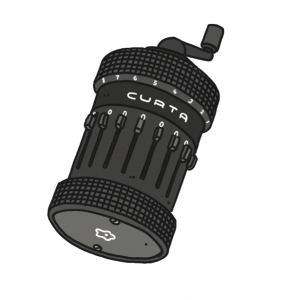Curtanomics
 I WAS LOUSY at maths in school. If anything I am even worse now. Weirdly I found basic ‘O’ level totally dull but additional maths (AO Level), when things became less arithmetic, became more intriguing. I also had a different teacher, which I suspect, made a big difference too.
I WAS LOUSY at maths in school. If anything I am even worse now. Weirdly I found basic ‘O’ level totally dull but additional maths (AO Level), when things became less arithmetic, became more intriguing. I also had a different teacher, which I suspect, made a big difference too.
But at this present moment I find myself fascinated by maths – not that I am any better at it today than I was 36 years ago – but the bottom portion of our latest Wallbook of Science & Engineering features a Maths & Measurement stream spanning from the ancient Babylonians use of Base 60 to the solving of Fermat’s last theorem (by Andrew Wiles in 1995) and beyond. I have discovered that the story of maths and its place in shaping and telling us about human cultures is truly astonishing.
Such intrigue has been excited even further by an extraordinary device which dropped through my letter box only this week. It is a true miracle of engineering which is featured on the new Wallbook’s x-axis at c. 1945 and on the y-axis in the abstract section at the bottom, marked Maths & Measurement.
I have to thank my friend Alex Bellos, author of the fabulous Alex’s Adventures in Numberland, for introducing me to the Curta – an extraordinary analogue calculating machine devised by Jewish engineer Curt Herzstark when he was imprisoned in a Nazi prison camp during World War II.
I bought my Curta on e-bay (an internet marvel, I have to confess). Mine was made, as were all of them, in Lichtenstein shortly after the war. About the size of a pepper-grinder this small, black drum of cogs, slides and gears allows you to add, subtract, multiply and divide almost as fast as using a modern electronic calculator. Decimal points, fractions – no problem. You can even do square roots.
As a result of the Curta I have, at long last, gained my first direct experience of the joy of arithmetic. I want to multiply, add, subtract – simply for the joy of resetting the machine, adjusting the slides and pulling the circular crank to reveal the answers to sums that would take me only a fraction faster on a modern electronic calculator and ages longer using pencil and paper
So, I wonder, what is it about this small, mechanical device that makes arithmetic so infinitely more pleasurable than tapping in numbers on the calculator app on my iPhone? How bonkers would it be to do sums for no other reason than to see the answers displayed on a screen? But doing sums for no other reason than witnessing this miraculous mechanical pepper-grinder crank out the answers feels entirely legitimate.
I can think of at least two reasons that account for this polarity of feelings. I wonder if they may provide some insight as to how it might be possible to make learning maths at school more engaging for those with a less arithmetical disposition.
Doing sums for no other reason than witnessing this miraculous mechanical pepper-grinder crank out the answers feels entirely legitimate
First maths only makes sense, at least initially, through the mechanics of our hands. Finger-counting, arranging number blocks, sliding counters on an abacus, sliding rules and, of course, calibrating a Curta all share a common denominator in which a love of arithmetic begins not in the abstract world of pencil and paper (or even more abstract on a calculator) but in the sensual world of touch and feel. This grounds the subject in reality before it wanders off, inevitably, into algebraic abstraction.
Second is narrative context. The Curta comes with its own built-in human-interest story of heroism courage, determination and genius. Chances are Herzstark would have ended up being a victim of the Holocaust like so many other millions of Jews were it not for the Nazi’s fascination with his designs for a highly portable, easy-to-use, superfast manual mechanical calculating machine. The story of how Herzstack lost and then regained his Curta patents and eventually benefitted from its commercialisation is no less extraordinary.
Writing our latest Science & Engineering Wallbook has convinced me that every major maths topic in the curriculum from reception to Further Maths A level has, somewhere, a grounding narrative context that can be used as a mental anchor to make even the most abstract concept accessible even to the most innumerate of minds. From Brahmagupta and the number zero and Descartes’ coordinates to the obsessive gambling of Cardano and Einstein’s extraordinary E=mc2 – there is no shortage of wonderful moments along a historical numberline that would, I am convinced, transform young people’s enjoyment of maths and measurement.
And while we are at it, why not give this new approach to maths teaching a name – let’s call it Curtanomics – in memory of that great man with his ingenious arithmetical pepper-grinder that has launched at least one middle-aged innumerate into a new relationship with numbers.



